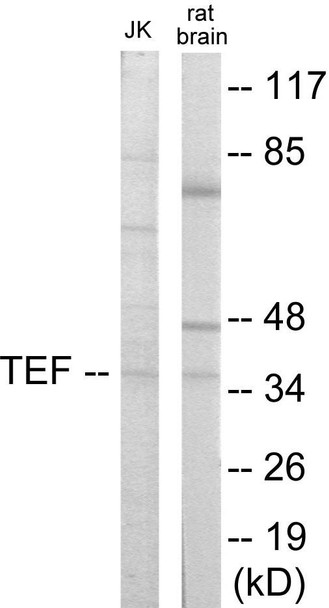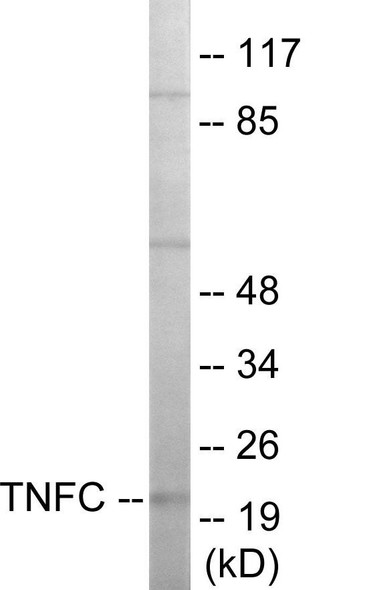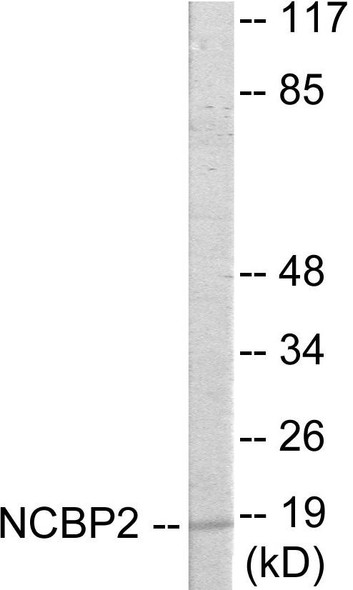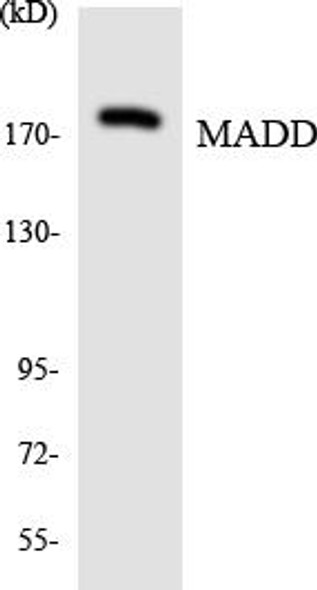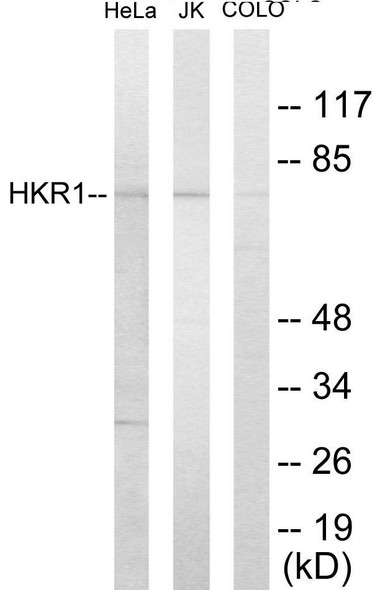TEF Colorimetric Cell-Based ELISA
- SKU:
- CBCAB01073
- Product Type:
- ELISA Kit
- ELISA Type:
- Cell Based
- Research Area:
- Cell Biology
- Reactivity:
- Human
- Mouse
- Rat
- Detection Method:
- Colorimetric
Description
TEF Colorimetric Cell-Based ELISA
The TEF Colorimetric Cell-Based ELISA Kit offered by AssayGenie is a valuable tool for researchers studying angiogenin levels in various biological samples. This kit provides high sensitivity and specificity, allowing for accurate and reproducible results in the detection of angiogenin in human serum, plasma, and cell culture supernatants.Angiogenin is a key protein involved in angiogenesis, playing a crucial role in promoting blood vessel formation and influencing cell proliferation. Its significance in conditions such as cancer, cardiovascular diseases, and neurodegenerative disorders makes it a vital biomarker for research and potential therapeutic developments.
The TEF Colorimetric Cell-Based ELISA Kit is a reliable solution for researchers looking to explore the role of angiogenin in various disease states and biological processes. With its user-friendly design and high-performance capabilities, this kit is ideal for a wide range of research applications. Visit www.assaygenie.com to learn more about how this kit can support your research efforts.
| Product Name: | TEF Colorimetric Cell-Based ELISA |
| Product Code: | CBCAB01073 |
| ELISA Type: | Cell-Based |
| Target: | TEF |
| Reactivity: | Human, Mouse, Rat |
| Dynamic Range: | > 5000 Cells |
| Detection Method: | Colorimetric 450 nmStorage/Stability:4°C/6 Months |
| Format: | 96-Well Microplate |
The TEF Colorimetric Cell-Based ELISA Kit is a convenient, lysate-free, high throughput and sensitive assay kit that can detect TEF protein expression profile in cells. The kit can be used for measuring the relative amounts of TEF in cultured cells as well as screening for the effects that various treatments, inhibitors (ie siRNA or chemicals), or activators have on TEF.
Qualitative determination of TEF concentration is achieved by an indirect ELISA format. In essence, TEF is captured by TEF-specific primary antibodies while the HRP-conjugated secondary antibodies bind the Fc region of the primary antibody. Through this binding, the HRP enzyme conjugated to the secondary antibody can catalyze a colorimetric reaction upon substrate addition. Due to the qualitative nature of the Cell-Based ELISA, multiple normalization methods are needed:
| 1. | A monoclonal antibody specific for human GAPDH is included to serve as an internal positive control in normalizing the target absorbance values. |
| 2. | Following the colorimetric measurement of HRP activity via substrate addition, the Crystal Violet whole-cell staining method may be used to determine cell density. After staining, the results can be analysed by normalizing the absorbance values to cell amounts, by which the plating difference can be adjusted. |
| Database Information: | Gene ID: 7008, UniProt ID: Q10587, OMIM: 188595, Unigene: Hs.181159 |
| Gene Symbol: | TEF |
| Sub Type: | None |
| UniProt Protein Function: | TEF: Transcription factor that binds to and transactivates the TSHB promoter. Binds to a minimal DNA-binding sequence 5'- [TC][AG][AG]TTA[TC][AG]-3'. Belongs to the bZIP family. PAR subfamily. 2 isoforms of the human protein are produced by alternative splicing. |
| UniProt Protein Details: | Protein type:Transcription factor; DNA-binding Chromosomal Location of Human Ortholog: 22q13.2 Cellular Component: nucleus Molecular Function:double-stranded DNA binding; protein binding; sequence-specific DNA binding; transcription factor activity Biological Process: positive regulation of transcription from RNA polymerase II promoter; regulation of transcription from RNA polymerase II promoter; rhythmic process; transcription, DNA-dependent |
| NCBI Summary: | This gene encodes a member of the PAR (proline and acidic amino acid-rich) subfamily of basic region/leucine zipper (bZIP) transcription factors. It is expressed in a broad range of cells and tissues in adult animals, however, during embryonic development, TEF expression appears to be restricted to the developing anterior pituitary gland, coincident with the appearance of thyroid-stimulating hormone, beta (TSHB). Indeed, TEF can bind to, and transactivate the TSHB promoter. It shows homology (in the functional domains) with other members of the PAR-bZIP subfamily of transcription factors, which include albumin D box-binding protein (DBP), human hepatic leukemia factor (HLF) and chicken vitellogenin gene-binding protein (VBP); VBP is considered the chicken homologue of TEF. Different members of the subfamily can readily form heterodimers, and share DNA-binding, and transcriptional regulatory properties. Alternatively spliced transcript variants encoding different isoforms have been found for this gene. [provided by RefSeq, Jan 2012] |
| UniProt Code: | Q10587 |
| NCBI GenInfo Identifier: | 51338730 |
| NCBI Gene ID: | 7008 |
| NCBI Accession: | Q10587.3 |
| UniProt Secondary Accession: | Q10587,Q15729, Q7Z3J7, Q8IU94, Q96TG4, B0QYS8, B2RC22 |
| UniProt Related Accession: | Q10587 |
| Molecular Weight: | 30,635 Da |
| NCBI Full Name: | Thyrotroph embryonic factor |
| NCBI Synonym Full Names: | thyrotrophic embryonic factor |
| NCBI Official Symbol: | TEF |
| NCBI Protein Information: | thyrotroph embryonic factor |
| UniProt Protein Name: | Thyrotroph embryonic factor |
| Protein Family: | Transcription factor |
| UniProt Gene Name: | TEF |
| UniProt Entry Name: | TEF_HUMAN |
| Component | Quantity |
| 96-Well Cell Culture Clear-Bottom Microplate | 2 plates |
| 10X TBS | 24 mL |
| Quenching Buffer | 24 mL |
| Blocking Buffer | 50 mL |
| 15X Wash Buffer | 50 mL |
| Primary Antibody Diluent | 12 mL |
| 100x Anti-Phospho Target Antibody | 60 µL |
| 100x Anti-Target Antibody | 60 µL |
| Anti-GAPDH Antibody | 60 µL |
| HRP-Conjugated Anti-Rabbit IgG Antibody | 12 mL |
| HRP-Conjugated Anti-Mouse IgG Antibody | 12 mL |
| SDS Solution | 12 mL |
| Stop Solution | 24 mL |
| Ready-to-Use Substrate | 12 mL |
| Crystal Violet Solution | 12 mL |
| Adhesive Plate Seals | 2 seals |
The following materials and/or equipment are NOT provided in this kit but are necessary to successfully conduct the experiment:
- Microplate reader able to measure absorbance at 450 nm and/or 595 nm for Crystal Violet Cell Staining (Optional)
- Micropipettes with capability of measuring volumes ranging from 1 µL to 1 ml
- 37% formaldehyde (Sigma Cat# F-8775) or formaldehyde from other sources
- Squirt bottle, manifold dispenser, multichannel pipette reservoir or automated microplate washer
- Graph paper or computer software capable of generating or displaying logarithmic functions
- Absorbent papers or vacuum aspirator
- Test tubes or microfuge tubes capable of storing ≥1 ml
- Poly-L-Lysine (Sigma Cat# P4832 for suspension cells)
- Orbital shaker (optional)
- Deionized or sterile water
*Note: Protocols are specific to each batch/lot. For the correct instructions please follow the protocol included in your kit.
| Step | Procedure |
| 1. | Seed 200 µL of 20,000 adherent cells in culture medium in each well of a 96-well plate. The plates included in the kit are sterile and treated for cell culture. For suspension cells and loosely attached cells, coat the plates with 100 µL of 10 µg/ml Poly-L-Lysine (not included) to each well of a 96-well plate for 30 minutes at 37°C prior to adding cells. |
| 2. | Incubate the cells for overnight at 37°C, 5% CO2. |
| 3. | Treat the cells as desired. |
| 4. | Remove the cell culture medium and rinse with 200 µL of 1x TBS, twice. |
| 5. | Fix the cells by incubating with 100 µL of Fixing Solution for 20 minutes at room temperature. The 4% formaldehyde is used for adherent cells and 8% formaldehyde is used for suspension cells and loosely attached cells. |
| 6. | Remove the Fixing Solution and wash the plate 3 times with 200 µL 1x Wash Buffer for five minutes each time with gentle shaking on the orbital shaker. The plate can be stored at 4°C for a week. |
| 7. | Add 100 µL of Quenching Buffer and incubate for 20 minutes at room temperature. |
| 8. | Wash the plate 3 times with 1x Wash Buffer for 5 minutes each time. |
| 9. | Add 200 µL of Blocking Buffer and incubate for 1 hour at room temperature. |
| 10. | Wash 3 times with 200 µL of 1x Wash Buffer for 5 minutes each time. |
| 11. | Add 50 µL of 1x primary antibodies (Anti-TEF Antibody and/or Anti-GAPDH Antibody) to the corresponding wells, cover with Parafilm and incubate for 16 hours (overnight) at 4°C. If the target expression is known to be high, incubate for 2 hours at room temperature. |
| 12. | Wash 3 times with 200 µL of 1x Wash Buffer for 5 minutes each time. |
| 13. | Add 50 µL of 1x secondary antibodies (HRP-Conjugated AntiRabbit IgG Antibody or HRP-Conjugated Anti-Mouse IgG Antibody) to corresponding wells and incubate for 1.5 hours at room temperature. |
| 14. | Wash 3 times with 200 µL of 1x Wash Buffer for 5 minutes each time. |
| 15. | Add 50 µL of Ready-to-Use Substrate to each well and incubate for 30 minutes at room temperature in the dark. |
| 16. | Add 50 µL of Stop Solution to each well and read OD at 450 nm immediately using the microplate reader. |
(Additional Crystal Violet staining may be performed if desired – details of this may be found in the kit technical manual.)

